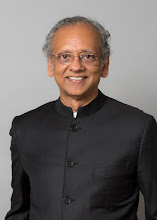A detenu’s plea for
hearing his appeal
Underneath the multi-layered solutions proffered to countless ills
afflicting judicial system, suggestion for setting up a National Court of
appeal with regional benches in Chennai, Mumbai and Kolkatta did some rounds
before the idea was temporarily buried with the Attorney General telling the
then Chief Justice T.S.Thakur’s court on April 26, 2016 that “We will only be
adding to lawyers’ pockets. The Supreme Court should not consider this when its
own dockets are full.” Recently, in Sadaulla @Sadab @Nanka, a detenu
serving a life sentence, after a conviction of Sessions Court in the State of
Jharkand had moved the High Court and Supreme Court successively to obtain bail
without success, pending his appeal and later approached the High Court again
pointing to the fact that he had served 10 ½ years in person and requesting to
set a date for hearing in his appeal. The High Court ordered that it has
no time to hear his appeal and dismissed the application. When the matter
reached the Supreme Court yet again, it ordered notice on 27.10.2017 promising
to consider what the remedies could be to administered to ensure hearing of
criminal appeals within reasonable time. The court noted that the scene of
inability of the High Court to hear the appeal was not limited only to
Jharkhand High Court and similar was the position prevailing in several High
Courts where a large number of criminal appeals were pending.
SC Arrears Committee
recommendations
The Supreme Court order makes reference to minutes of the
'stakeholders' meeting called by the Arrears Committee on 8th April
2017 and what it reveals is interesting. It records the fact that pendency of
cases which are more than five years old in High Courts is more than 40% and
disposals of criminal appeals are less than the corresponding rate of
institution. In the High Courts, there are 16.29 lakh cases that are more than
5 years old of which 7.43 lakh cases are more than 10 years old. Underlining
the need for re-engineering the structure of administration of justice by which
the Supreme Court and the High Courts may discharge their core constitutional
functions, it suggested that statutory appeals could be dealt with by an
alternative mechanism by courts of appeal, which in the hierarchy will be
higher to the district judges but below the High Court. In other words, an
intermediary tier between the High Court and the District Court is envisaged
that will have a cadre drawn partly by selection from the Higher Judicial
Service and partly from the Bar through Centralised recruitment mechanism.
Intermediate appellate
court between District Court and High Court
This suggestion has a distinct advantage. In the Constitutional scheme
of things, High Courts are not subordinate to Supreme Court, in matters of
judicial administration, the way the District courts are to the High Courts.
Setting targets for disposals to High Courts could not be done and increasing
numbers of High Court judges are never easy matters. With the above suggestion,
it may be possible for High Courts to set disposal norms to be achieved for
such intermediate appellate Benches and their functions could be closely
monitored. Based on performance, integrity and suitability, members of the
appellate Benches may be considered for elevation to the High Courts.
Hitherto, 1/3 of judges of the High Court are drawn from the cadre of District
judges; now, they will be from the members of the appellate Bench. Dealing with
a possible objection that creating another Appellate Forum might not
necessarily result in reducing the docket load of the High Courts, the
Committee noted that scope of interference in constitutional jurisdiction of
the High Courts under Article 226 and 227 is circumscribed and will not be the
same as deciding on facts and law. Consequently, the decisions of these
appellate Benches cannot be appealed as a matter of course against to the High
Courts.
The aborted initiative
The attempt of the Supreme Court to look into its own recommendation on
its judicial side has been unfortunately aborted when the Chief Justice
withdrew the case before himself and 2 Companion judges and 'recalled'
the order on 8.11.2017 by a placid observation that High Courts shall
expeditiously hear appeals where accused persons have already spent 10 years,
as though it was exercising a review or intra court appellate jurisdiction. If
the Supreme Court will not address the problems of persons in jails whose
appeals are not being heard for more than a decade, will the reform come from
some quarters who will deal with how to improve the quality of jails so that
persons inside have no need to complain, after all? If that happens,
Mallya will have lost one line of argument from his armoury before the
Magistrate to thwart his extradition!
